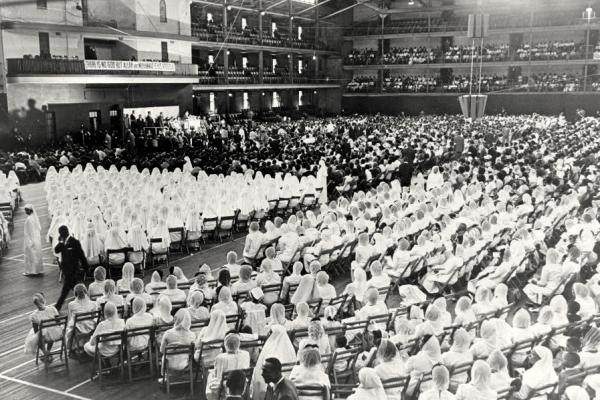Explore Stories
Stories offer an individual narrative of a specific subject. They are the building blocks of Story Collections.

Paul Robeson, Malcolm X, and Martin Luther King Jr. were militant activists who shared common ground as heroic civil rights icons and left their marks on West Philadelphia.

Malcolm X is the second iconic civil rights activist with an imprint on West Philadelphia. He belongs to a radical civil rights tradition that links him with Paul Robeson and Dr. Martin Luther King Jr. Part IV looks at Malcolm’s break with Elijah Muhammad and the Nation of Islam, his turn to Pan...

Malcolm X is the second iconic civil rights activist with an imprint on West Philadelphia. He belongs to a radical civil rights tradition that links him with Paul Robeson and Martin Luther King Jr. Part III looks at Malcolm’s meteoric rise in the Nation of Islam in the mid-1950s, his role for a...

Malcolm X is the second iconic civil rights activist with an imprint in West Philadelphia. He belongs to a radical civil rights tradition that links him with Paul Robeson and Martin Luther King Jr. Part II looks at Malcolm Little’s prison conversion to the version of Islam practiced by the...

In the 1950s, Malcolm X was the national representative of Elijah Muhammad’s Nation of Islam (NOI). In the 1960s, he became a harsh critic of Elijah’s personal failures and NOI’s rigidly separatist and starkly apolitical theology. In the last years of his life, he converted to orthodox Islam and...

Part IV focuses on the final chapter of Paul Robeson’s eventful life when his myriad leftist political activities and stated views resulted in a deliberate and largely successful campaign by federal agencies, mainstream media, and other hostile critics to erase him from historical memory....

Part III focuses on Paul Robeson’s campaigns on many humanitarian fronts in the face of sustained persecution by the federal government (not to mention white supremacists) and suspension of his U.S. passport in the 1950s. His true Achilles heel, for which he was reviled as a traitor by...

Paul Robeson, Part II, focuses on the artist as a revolutionary. In the decade before World War II, he stood against racism, fascism, and colonialism, and campaigned relentlessly for social justice and human rights for all oppressed peoples. He paid particular attention to African independence...

Paul Robeson was the best known African American of the first half of the 20th century. He was famous as an All-American football player, the world’s finest bass-baritone singer of his time, a pioneering black theatrical and screen actor, and a tireless political activist. He advocated...

Drexel University and its development partner Wexford Science & Technology leveled the property on which University City High School stood and built in its place the following: 1) a two-story school building, home to two high-performing, small public schools—the Samuel Powel Elementary...

The financially strapped School District of Philadelphia closed University City High School in 2013; the District sold the campus to Drexel University in 2014; Drexel demolished the high school in 2015.

Spirited academically based community service projects of the late 1990s at University City High School honored the memory of the Black Bottom.